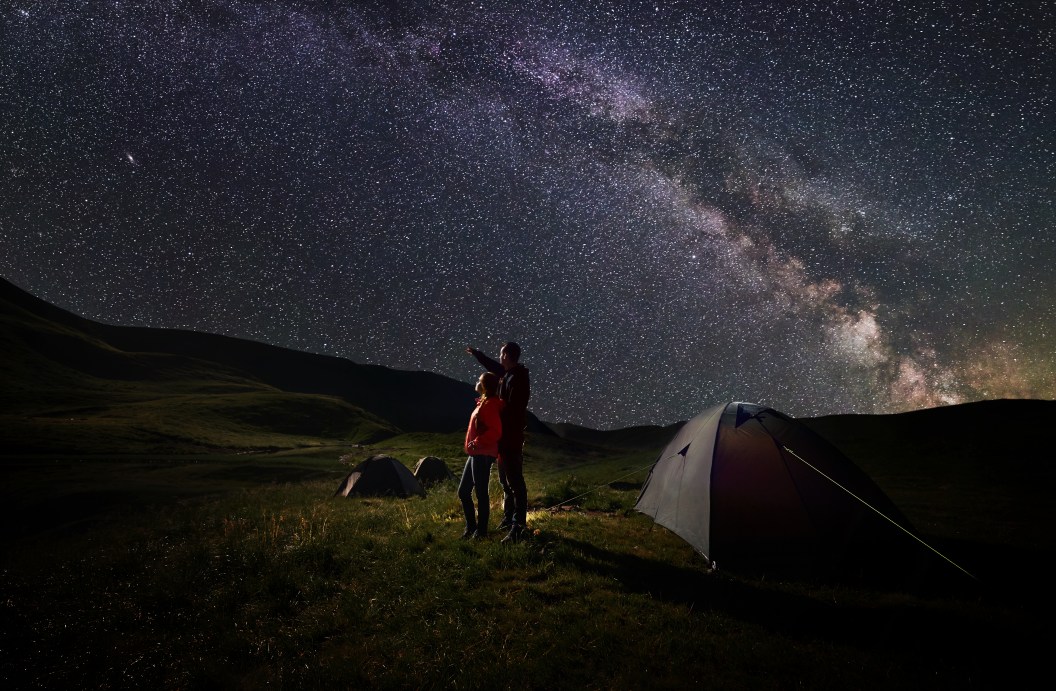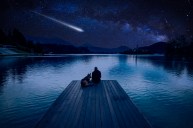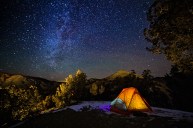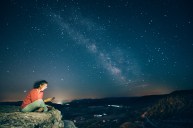Summer is the ideal season to look up and marvel at the night sky, see stars twinkle, gaze at the Milky Way, pick out constellations, and spot bright planets illuminated against a pitch-black canvas. If you're lucky, you might even see a shooting star streak across the darkness—or if you plan it right, a full meteor shower.
While stargazing road trips are incredible, you most likely don't have to venture far from home to enjoy the night sky. You might already live somewhere with dark skies, but even if you're in a city, you can likely find a place not too far away with less light pollution to maximize your viewing opportunities.
We chatted with Samuel Singer, Ph.D., founder and executive director of Wyoming Stargazing to score some insider tips on how to see the best stars this summer, whether you're camping or laying in the backyard.
1. Find the Right Spot
Dark skies are ideal for the best stargazing. You might find dark skies in your own backyard, on the outskirts of town, or out on a camping trip.
"Unless you're living right in the middle of a big city like New York City, you're still going to be able to see something," says Singer. "You can really just go into your backyard for starters ... you don't have to go far."
Head somewhere as far away from the lights of town or of nearby houses as possible. And, of course, be sure to turn off your headlamp or truck headlights.
If you're not sure about the best spots for stargazing, Singer suggests asking a local astronomy club for their suggestions about where to go in your area.
2. Check the Weather
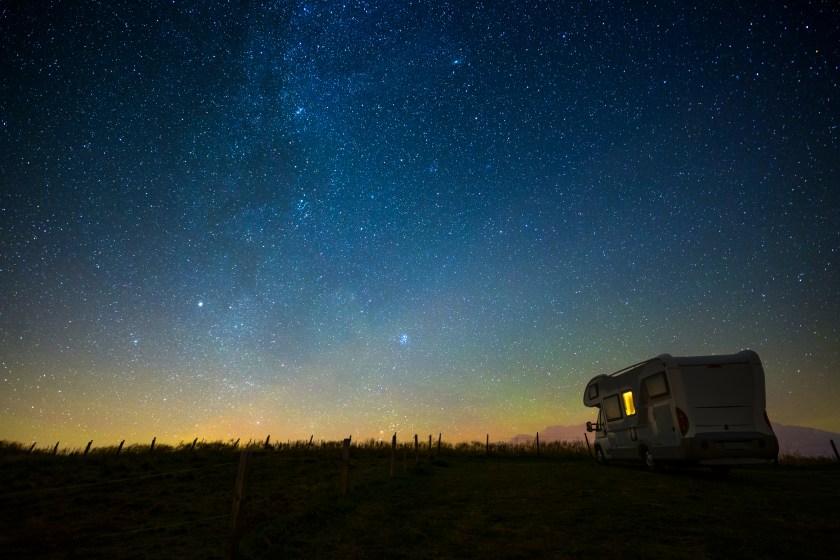
Getty Images, Samuel Dutler
While you don't need perfect weather for stargazing, you do want to have a clear view of the night sky. If it's raining or cloudy, you're probably not going to see as much as you'd like, so if you can, choose a clearer night.
You also want to know what time it gets dark, the current phase of the moon—a full moon is incredible in its own right, but it can actually make it harder to see the stars!—and what time the moon is rising—all of this info will be in the evening weather forecast.
Finally, even on a hot day, it can get chilly at night. Scope the predicted temps and dress appropriately.
3. Bring a Comfortable Setup
If you're going to be sitting out for a few hours, be sure to bring what you need to be comfortable. Pack camping chairs or blankets to sit on, tote along a few warm layers or some light blankets, and consider snacks and drinks. If insects might be a problem, pack mosquito repellent.
You may also want to bring a red light headlamp to be able to see when navigating around your viewing spot while preserving your night vision.
4. Take It In With Your Own Eyes
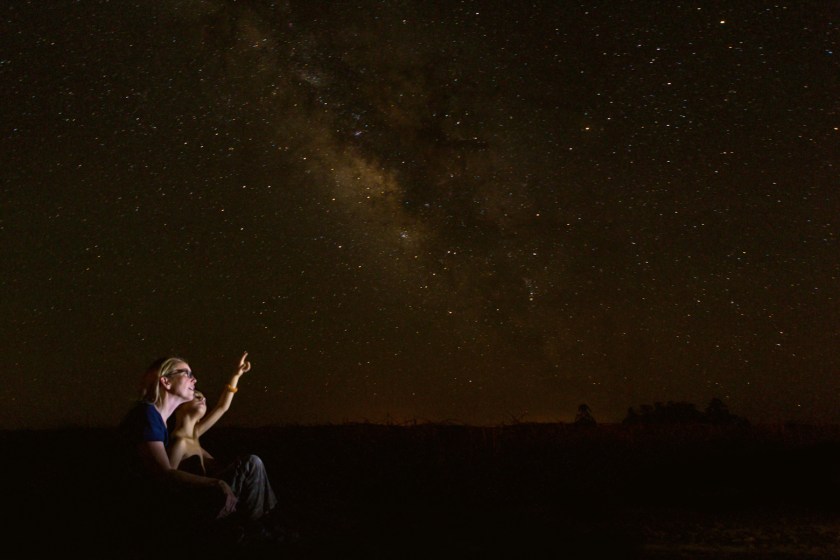
Getty Images, SDI Productions
If it's your first time stargazing, Singer suggests keeping it low-tech: "There are lots of apps out there and fancy telescopes that you can buy off the shelf right now that are supposed to be totally automated and that will take pictures for you. There are all kinds of incredible technology, but it gets in the way, in my opinion, of actually just enjoying looking at the night sky," he says.
Singer instead advises, "Just spend your first night admiring the beauty of the night sky. Look for shooting stars. We see several shooting stars every night. It's just about looking up."
5. ...But Know When to Use Technology
While gazing up at the night sky with your bare eyes is spectacular, you may find yourself wanting to know additional information about what you're looking at. That's when one of those phone apps might come in handy for identifying stars, planets, satellites, and other objects in the sky. Some apps, like Night Sky, allow graphic overlays, meteor shower information, and a variety of other features.
And if you're a seasoned stargazer, you rebel from Singer's advice for newbies and bring alone a telescope or binoculars if you like. Local libraries might even have these items available for you to check out.
6. Mark Astronomical Events on the Calendar
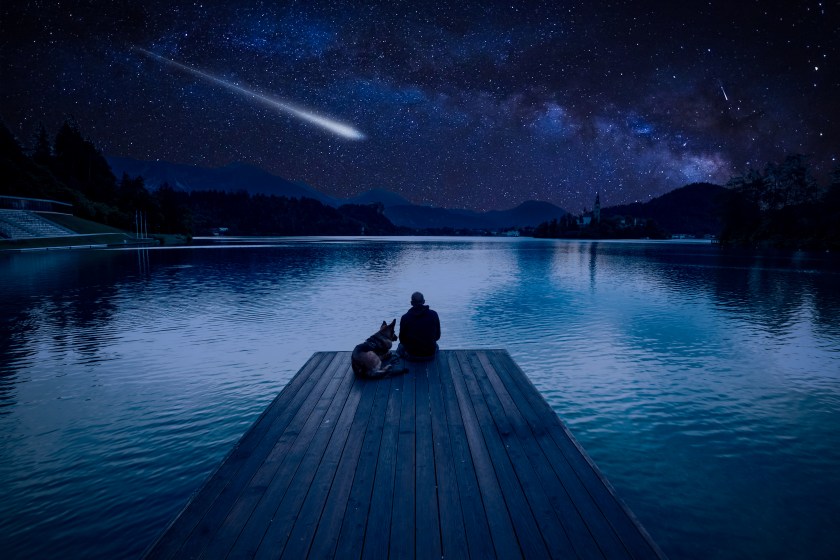
Getty Images, merc67
Whether you'd like to see a meteor shower or gaze up in hopes of seeing the aurora, familiarize yourself with upcoming astronomical events before heading out. Check out NASA's list of meteor showers that happen regularly, so you can learn about them and time your stargazing for the best chance of seeing meteors. SpaceWeatherLive.com shares information about solar activity, including the possibility of seeing northern lights.
7. Join a Stargazing Group
Stargazing with a group can be a great way to learn and make new friends. Wyoming Stargazing is just one of many groups that offer opportunities for people to learn about the night sky. The nonprofit offers free weekly public stargazing events in Jackson Hole, Wyoming, and also books private programs.
Star parties are popular, and many national parks host viewing events. State and local parks, as well as museums, universities, and community colleges, may offer viewing opportunities, as well as local astronomy clubs. A great advantage of attending an event is not only meeting skilled enthusiasts who can share their knowledge, but many times the groups provide telescopes for an even better view.
8. Always Keep Safety in Mind
Stargazing can involve going to remote locations at night, so be sure to take common sense precautions and be aware of your surroundings. If you're heading well off the beaten path, it's wise to go with at least a buddy and let someone at home know where you're going. Be mindful of regulations and private property, and make sure the area where you're going is open to the public at night, since some parks and other areas close. If you're in an area with wildlife like bears, be sure to take appropriate precautions to stay safe.
Bringing a light source is important: "We always recommend that people bring headlamps so you don't trip in the dark," Singer says. "It's better to have a headlamp with a red light as red light won't disturb your night vision as much." It's also good etiquette, as a typical white light headlamp can be blinding to your companions. Many headlamps have a red-light setting with the double-click of a button or the sliding over of a red filter (like the Black Diamond Storm 400 or Princeton Tec Tactical EOS LED Headlamp).
READ MORE: 6 Stargazing Festivals Worth Planning Your National Park Trips Around This Summer
